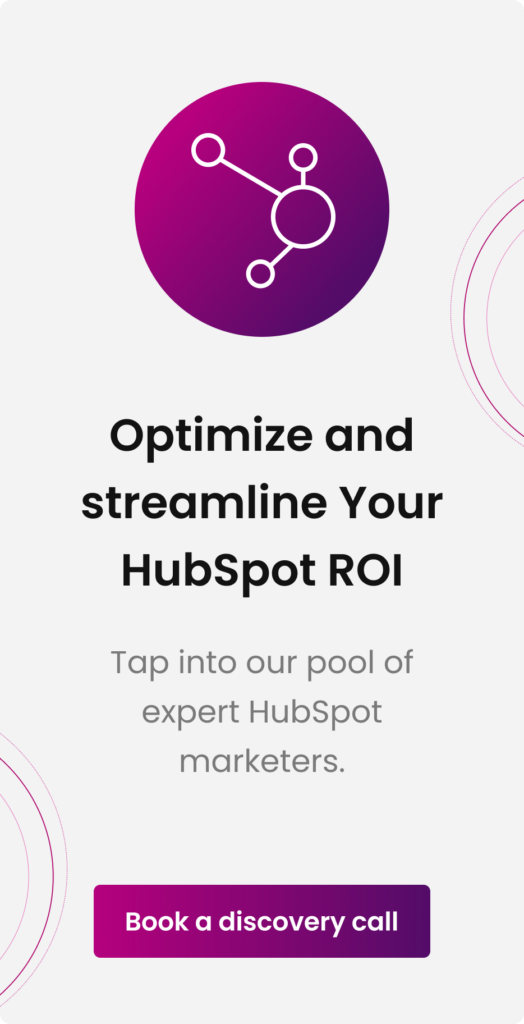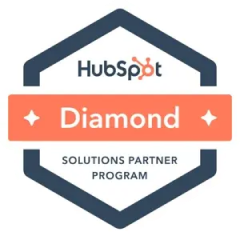When choosing a content management system (CMS) for your website, WordPress is often the first option that comes to mind. It’s user-friendly and flexible, and it has served many businesses well.
However, as your business grows, you might find that WordPress no longer meets all your needs. This is where HubSpot CMS comes in as an effective alternative that offers more comprehensive features without the hefty price tag of many enterprise-level platforms.
While WordPress has been a reliable platform, it may not fully support the comprehensive inbound marketing strategies needed today. Businesses now require more than just a blogging tool; they need a seamless platform that integrates marketing, sales, and customer management. HubSpot offers this integration, providing a unified system that enhances your marketing efforts, streamlines sales processes, and optimizes the customer journey.e
Migrating to HubSpot is not limited to switching platforms but helps address essential pain points and utilize a system specifically designed to foster growth. In this blog, I will walk you through the step-by-step process of migrating your website from WordPress to HubSpot, ensuring a seamless transition and setting your business up for success.
What is Website Migration?
| Website migration involves transferring a website from one location or platform to another. This process can include changing hosting providers, domain names, and website platforms or restructuring the website’s content. |
Making the Switch: Questions to Ask Before Migrating to HubSpot
Evaluating the impact on your business before migrating from WordPress to HubSpot is essential. Here are the main considerations and common questions to help you make an informed decision.
- Is HubSpot Worth the Cost?
Yes, the monthly payment for HubSpot CMS is higher than WordPress’s. However, if your business plans to leverage HubSpot’s extensive sales and marketing tools (like replacing MailChimp), the investment is worth it.
If you only need an essential website, WordPress might be more cost-effective.
- How Complicated is the Migration Process?
Migrating to HubSpot is simpler than you think. The process is straightforward, and you can ensure a smooth transition with the right planning.
- What About My Current Plugins and Integrations?
Evaluate your existing WordPress plugins to identify which functionalities you need to replicate in HubSpot. The HubSpot App Marketplace offers many native integrations that are easy to install, potentially reducing the need for additional plugins.
- Will I Need to Redesign My Site?
Transferring your design to HubSpot will be easier if you have a branding guide. Ensure your fonts, colors, and other brand elements are documented for seamless customization of HubSpot templates.
- Can I Import My Blog Posts?
Yes, you can import your existing blog posts into HubSpot. Important elements like titles, body content, URLs, publish dates, authors, tags/categories, meta descriptions, featured images, and comments will be transferred.
- What About My Images and PDFs?
Images in gallery tags and PDFs linked in posts won’t be included in the import. Audit your images, upload them to HubSpot, and update alt text as necessary. Organizing files in folders will help you manage them efficiently.
- Do I Need to Redirect Links?
If URLs change during migration, set up redirects in HubSpot to maintain SEO and user experience. Regularly audit your URLs to ensure there are no broken links.
Ready to get started with HubSpot CMS? For more details, read our blog on The Ultimate Guide To HubSpot: Basics, Features, And Benefits for a comprehensive overview.
Preparing for a Smooth WordPress to HubSpot Migration
Migrating your website from WordPress to HubSpot can significantly enhance your digital marketing capabilities. Before diving into the migration, laying a solid foundation to ensure a seamless transition is crucial. Here’s a step-by-step guide to help you prepare effectively.
- Pre-Migration Audit and Planning
The first critical step is thoroughly auditing your current WordPress site. Assess your website’s structure, content organization, and custom functionalities. Identify what works well and what needs improvement.
This evaluation will help you make informed decisions and set the stage for a smooth migration. Review your site’s structure, content, and features. Ensure all data is backed up to prevent any loss during migration. Identify necessary changes to improve your site post-migration.
- Define Clear Migration Objectives and Goals
Establishing clear objectives for the migration will guide the process and help measure success. Whether you aim to enhance marketing capabilities, improve lead generation, or streamline customer service, having well-defined goals is essential. Determine what you want to achieve with the migration. Make sure your goals align with your overall business strategy.
- Select HubSpot Templates and Design Considerations
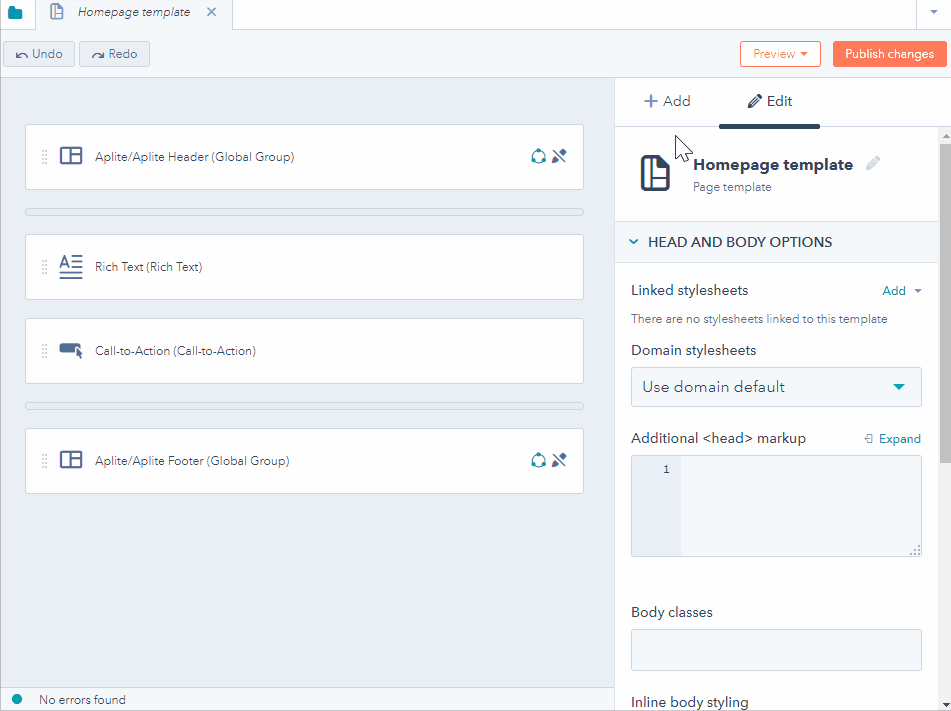
Choosing the right HubSpot templates and design options is crucial for maintaining your brand’s look and feel. Explore HubSpot’s template library and select designs that best fit your branding needs. Review HubSpot’s template options. Ensure templates match your brand for a seamless transition.
- Train Your Team on HubSpot
Empower your team by providing comprehensive training on HubSpot’s features and functionalities. Familiarity with the platform ensures a smooth onboarding experience and efficient post-migration operations. Conduct training sessions on HubSpot tools and features. Make sure the team is comfortable using the new platform.
- Set Roles and Access Permissions in HubSpot
Before migrating, establish roles and access permissions in HubSpot. Assign responsibilities based on team roles to ensure data security and streamline workflow. Establish clear roles and permissions for team members. Allocate tasks based on team roles.
These pre-migration steps will prepare you for a successful WordPress to HubSpot migration. This organized approach ensures a smooth transition and unlocks the full potential of HubSpot’s dynamic marketing suite.
10 Steps to Successfully Migrate from WordPress to HubSpot
Migrating your website from WordPress to HubSpot can seem challenging, but with careful planning and execution, it can be a smooth process. Whether you manage it yourself or use a HubSpot website migration service, these steps will help you achieve a seamless transition and make the most of HubSpot’s robust platform.
Step 1: Audit Your Current Website
Before you begin, it’s essential to understand what you are migrating. Conduct a thorough audit of your current website to analyze performance and collate all assets.
- Collect All Content: Ensure every page, URL, and piece of content is accounted for. This includes pages, posts, images, videos, and downloadable files.
- Identify Valuable Content: Look for pages that attract visitors, establish backlinks, or are crucial for internal linking.
- Organize Your Findings: Use a simple Excel spreadsheet to keep track of each asset. This will help you during the migration process and ensure nothing is missed.
Step 2: Export and Import Redirects
Manage your redirects for a smooth transition. When migrating, changing servers means redirect settings must be moved to HubSpot.
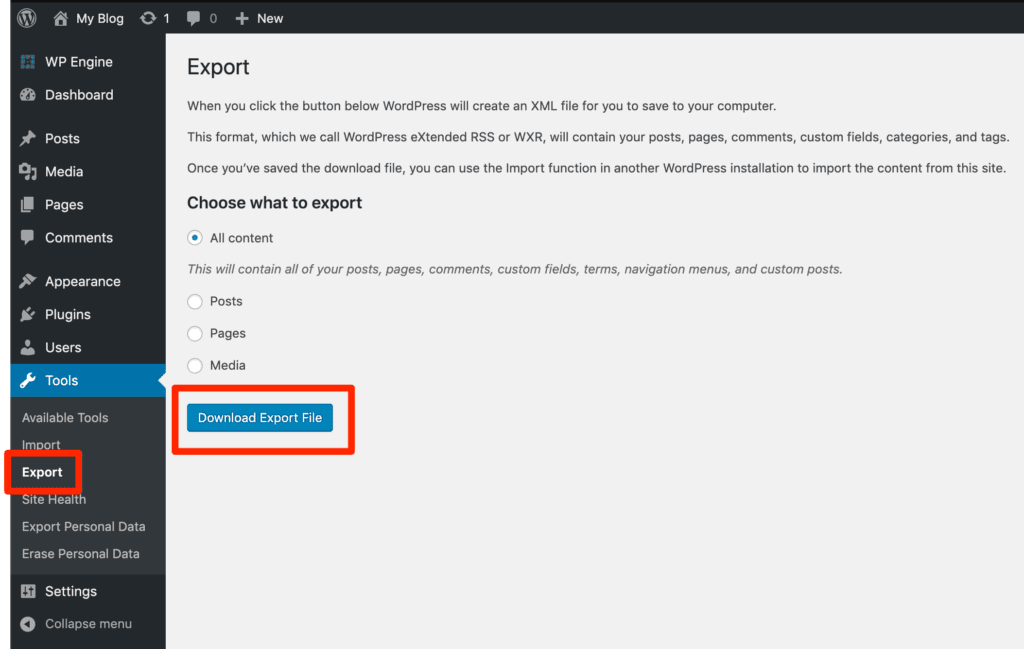
- Export Redirects from WordPress: Use a plugin or export from the .ht access file.
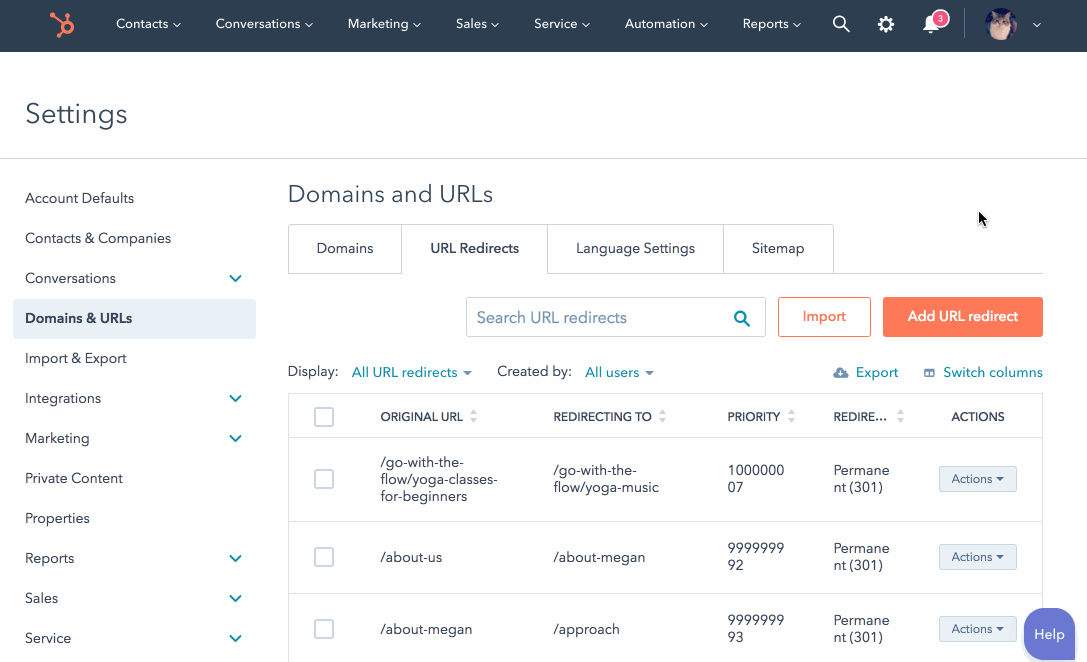
- Import Redirects to HubSpot: Upload these redirects into HubSpot to ensure visitors are directed to the correct pages and avoid 404 errors.
- Streamline Redirects: Take this opportunity to remove any chains or loops that can slow down your website and negatively impact SEO.
Step 3: Check the Attached Services, Software, and Integrations
Ensure all services are accounted for. Your website might have attached services or software that must be considered during the migration.
- Review Subdomains and Tools: Identify customer portals, restricted areas, or other services attached to your domain.
- Plan for DNS Changes: If these services share the same domain, plan for new domains or subdomains to maintain access post-migration.
Step 4: Preconfigure Domain Settings in HubSpot
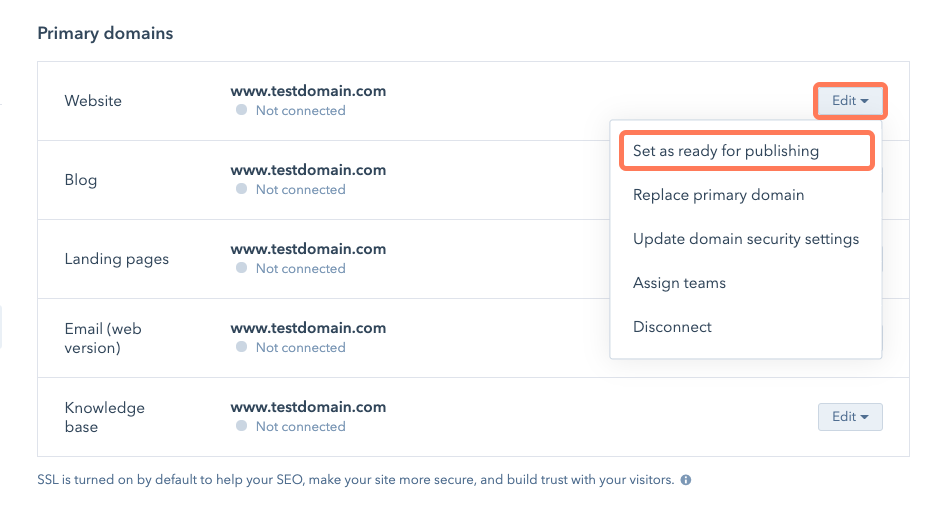
Set up your domain in advance. Preconfiguring your domain settings in HubSpot can reduce downtime during migration.
- Configure Domain Settings: Set up the correct URLs and pre-provision SSL certificates.
- Prepare for Launch: By managing these settings ahead of time, you can ensure a smoother transition with minimal service interruption.
Step 5: Stage Your New Website in HubSpot
Prepare your content in HubSpot. Your new website needs to be staged in HubSpot before going live.
- Use HubSpot’s Staging Tools: HubSpot’s content staging functionality allows you to prepare your website pages before publishing.
- Choose the Right Migration Service: Whether using HubSpot’s migration service, a theme from the marketplace, or working with a web design agency, ensure your new site is ready for launch.
Step 6: Import Your Blog into HubSpot
Transfer your blog content. If you have a blog, migrate all posts from WordPress to HubSpot.
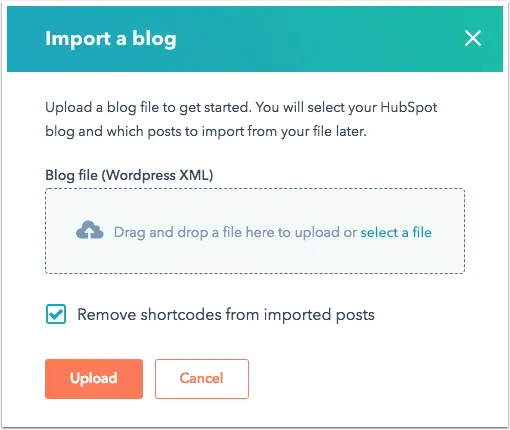
- Use HubSpot’s Blog Import Tool: This tool simplifies importing blog posts, saving you time.
- Quality Check Content: Review your blog content for any formatting changes or issues after importing.
Step 7: Recreate Forms, Notifications, and Automation
Set up essential website functions. Your website likely captures leads and automates processes that must be recreated in HubSpot.
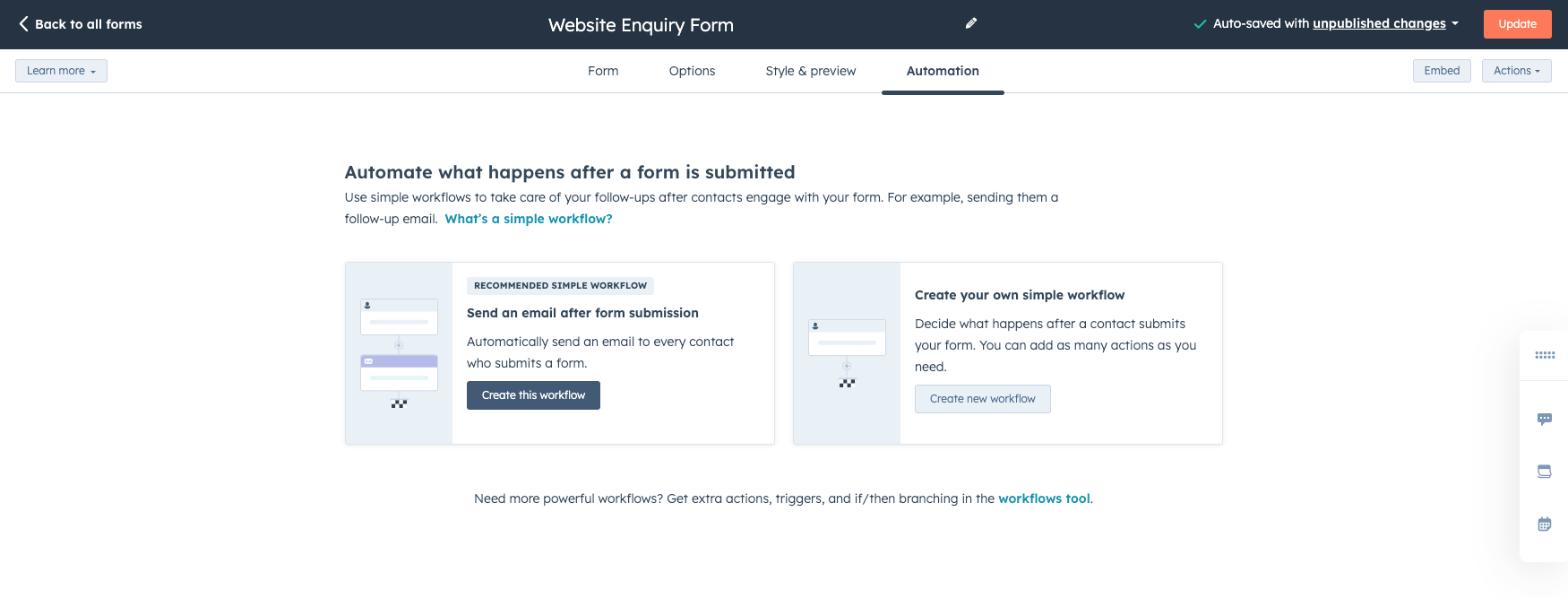
- Configure Workflows: Set up workflows for notifications, emails, and data updates based on website actions.
- Ensure Readiness: Make sure these processes are ready to go post-migration to avoid missing inquiries and leads.
Step 8: Test Your Website
Thoroughly test your new site. Before going live, test your new HubSpot site to ensure everything works correctly.
- Preview Across Devices: Use HubSpot’s preview functionality to test your site’s appearance on desktop, tablet, and mobile.
- Check Functionality: Test forms, links, and interactive elements to ensure they work smoothly.
Step 9: Switch DNS Records
Update your DNS settings. Switching DNS records is a critical moment in your migration.
- Apply New DNS Records: Use the preconfigured DNS settings to update your DNS provider.
- Minimize Downtime: Allow time for DNS records to propagate and expect some service interruption.
Step 10: Test Again
Final testing and quality assurance. Once the DNS switch is complete, test your site again to catch any issues.
- Check for Technical Issues: Look for broken links, images, and redirects, and ensure all services function correctly.
- Fix Any Problems: Address snags immediately to ensure a seamless user experience.
Following these steps, you can de-risk your WordPress to HubSpot migration and achieve a smooth transition. Proper planning and thorough testing are key to a successful migration, ensuring your new HubSpot site is optimized and ready for your audience.
Unlock Your Business Potential With Expert HubSpot Support!
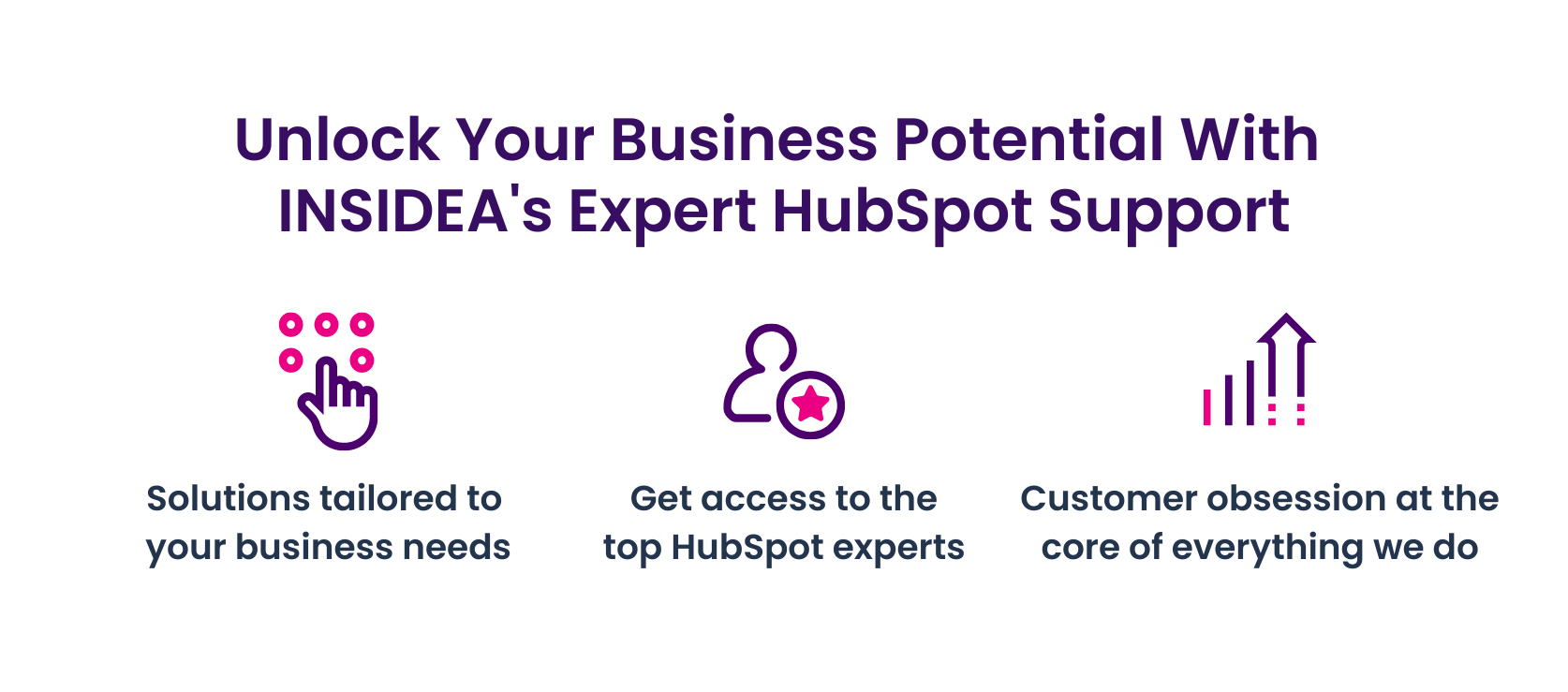
As a HubSpot Diamond Solutions Partner, we take pride in assisting you in streamlining your HubSpot efforts. With our best-in-class marketing, sales, and service solutions, we help you scale exponentially. INSIDEA’s HubSpot Specialists have the required in-depth knowledge and can provide expert guidance on how to use the platform to meet your business needs.
Get in touch today to learn more about how INSIDEA can help you succeed!
- Tailored Experience: User experience is our primary focus. Thus, INSIDEA works with you to ensure your HubSpot experience is tailored to your business needs.
- Industry Expertise: Our team specializes in setting up, implementing, and optimizing HubSpot tools. We are well-versed in HubSpot best practices to ensure your business has the highest ROI possible.
- Customer Obsession: Customer satisfaction is the key to success, and we strive to ensure that our customers’ needs are met and exceeded every time.
At INSIDEA, we understand the importance of valuable HubSpot strategies that understand your target audience and drive conversions. Book a meeting with our HubSpot experts to explore how we can help you with your upcoming projects.
Get started now!





